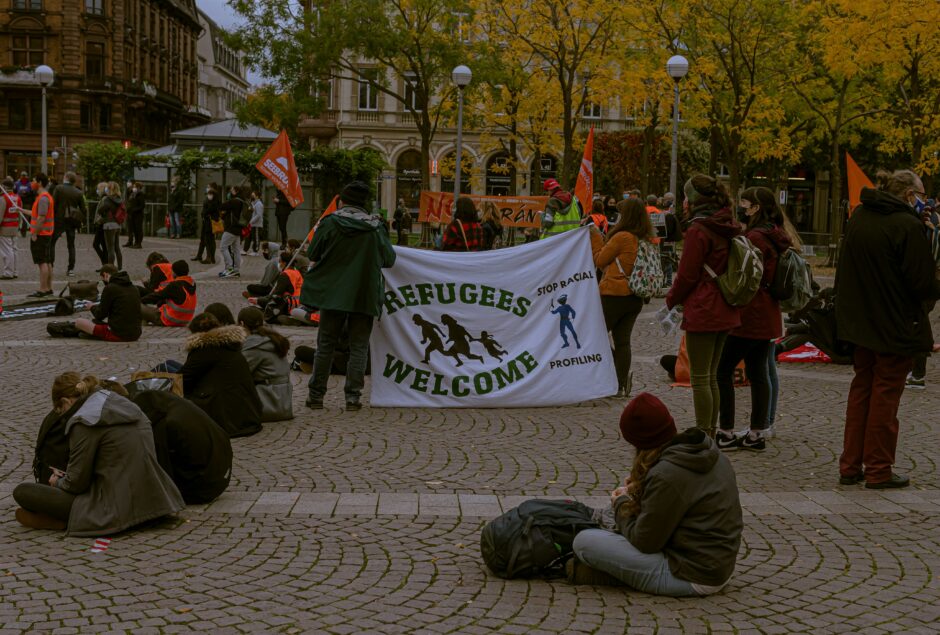Immigration is increasingly being framed in Europe under the context of security. In 2015 alone, 1.3 million migrants sought asylum, and the region has the highest rate of intra-regional migration. Along with an observed rise in crime rates in many European countries, the general sentiment in Europe states that immigration may be one of the causes of increased crime in society. According to a Pew research study, over 50% of adults in multiple European countries believed that incoming refugees increased the likelihood of terrorism, and over 40% of respondents in Italy, Sweden and Hungary blamed refugees for crime. This narrative has been reinforced by the growing influence of far-right political parties in the Netherlands, Italy, Germany, France, Hungary and Romania, which continue to perpetuate anti-immigrant policies and rhetorics, linking immigration to crime and violence.
In contrast, many scholars refute claims that causally link immigration to crime and violence, instead suggesting that both legal and illegal immigration are more likely to be associated with decreased or unaltered rates of crime. Between 2017 and 2024, nineteen peer-reviewed studies concluded there is either no significant relationship between immigration and crime or that increased immigrant populations are associated with lower violent and property crime rates.

In the Nordics, research often shows that immigrants are over-represented in crime, which has led to claims that higher crime rates are a result of immigration. However, studies analysing communities in Sweden reveal little to no significant correlation between immigration and high violent crime rates. Crime rates that attribute increases to immigration are generally based on recorded crimes, which do not require the identification of the suspect or those convicted. In Sweden, the majority of reported crimes are not associated with a suspect or perpetrator. Policing practices and private reporting biases, where crimes involving immigrants are more likely to be reported, further skew these statistics. People should focus on broader crime patterns and trends rather than individual cases to better understand the realities behind the numbers and avoid unfair generalisations.
One of the key reasons that anti-immigrant rhetoric tied to crime rates has persisted is the influence of political and media narratives. During election campaigns, selective coverage and targeted political messages fuel public fear. Increased political anti-immigration rhetoric in Europe has intensified over the last two decades, and as such both traditional and social media have progressively framed the immigrant as a threat. These negative depictions in public and media discourse increase prejudice and mistrust. Through a social psychological perspective, this narrative creates an “us vs them” conflict, portraying immigrants as outsiders and reinforcing divisions between natives and newcomers.
Certain immigrant and ethnic minority groups often face more intense police surveillance, making them more likely to be arrested. As a result, they are disproportionately subjected to tougher sentences and higher conviction rates. In urban areas, where many immigrants are socially marginalized and forced to reside in communities with higher crime rates, they are also more likely to encounter criminal justice actions. This overrepresentation in crime statistics is often a reflection of systemic bias rather than actual criminal behavior.
Economic challenges also play a significant role in shaping outcomes for immigrant communities. Immigrants often experience greater difficulty in securing employment as compared to natives, which may proliferate financially motivated crimes. In Denmark, immigrants and descendants generally have lower wages than Danes, and wage dispersion is similarly lower than among Danes. The former are more represented in low-skilled and low-paid jobs, and in cases where immigrants, descendants and Danes have the same jobs, the wage differences are due to differences in education and work experience. There are visible inequalities with how immigrants and their descendents have access to housing as well, as a result of high and increasing prices in the owner market. Connections and social networks being key in the private renting market mean that immigrants, to a much higher degree, live in homes with the lowest standards of facilities.
Prejudice towards immigrants, especially those from non-western countries is particularly prevalent, thus contributing to an Islamophobic climate in society, and affecting policies in host countries. In the Danish Parliament for example, for over ten years, legislative changes have made it increasingly difficult for immigrants to attain citizenship, establish family unification and have created new barriers for immigrants to live together with their spouses and access the same level of assistance system as the rest of the population. Clauses prohibiting racial discrimination are similarly rarely effectively applied. Such circumstances deepen the divisions between immigrants and natives and exacerbate barriers to integration.

Photo by Folco Masi on Unsplash
While viewing human mobility as a social construct, which have devolved into the status of a threat and crisis to manage, one must consider that both the state and the public hold a specific view of ethnicity and nation that lends to the prejudicial narratives surrounding migration. If the narratives disseminated by the state and non-state actors (such as media) are embedded in discriminatory cognition, the respective society would at average be more prejudiced towards migrants, and view their presence as a factor that worsens their country. Dehumanising language begins in the depiction of immigrants right from entry, with the portrayals by border control. Furthermore, when migrants are treated as criminals, or deported, negative attitudes also increase. Office-seeking candidates in most European countries shift their responses and policy platforms largely based on public opinions regarding immigration, thus anticipating and even fuelling such debates to position their campaign of. These debates in turn are largely formed by media coverage, which is largely problem-centric. As immigration becomes a political issue, it can shape politics and policies and have an effect on how citizens vote.
It’s time to rethink the narratives we build around immigration. Instead of framing human mobility as a threat, we need to challenge the stereotypes and dehumanizing language that divide us. Politicians, media, and citizens alike have a responsibility to focus on solutions rather than fear-mongering. After all, how we talk about immigration shapes not only policies but also the kind of society we choose to create. The question isn’t whether immigration is a challenge, it’s whether we can rise above prejudice to meet it with fairness, empathy, and unity.






